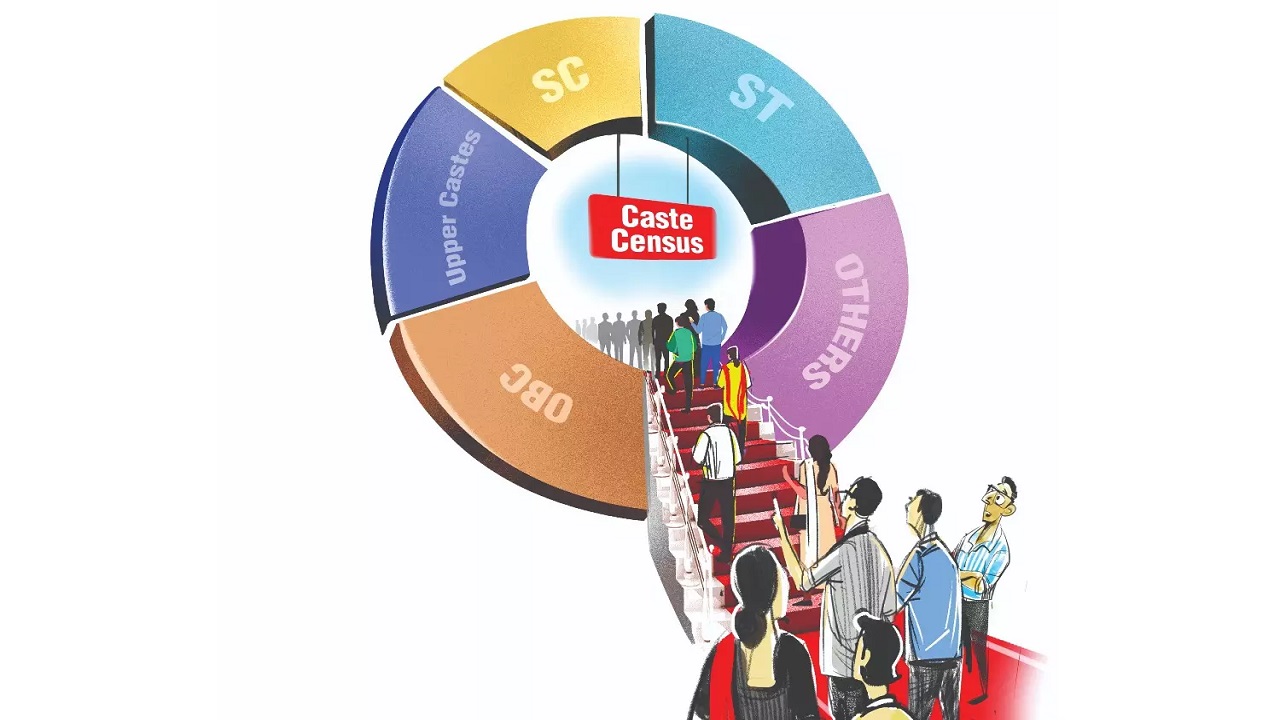Caste in the Census: A New Chapter for India’s Governance and Social Justice
The Cabinet Committee on Political Affairs (CCPA) has approved the inclusion of caste data in the upcoming population census, a significant decision given the 2021 Census was postponed due to COVID-19 and remains indefinitely delayed. This move revives debates on caste-based enumeration’s role in governance, social justice, and politics, making it a critical topic for UPSC aspirants under Polity, Governance, and Social Justice.
Below is a concise yet comprehensive analysis, tailored for UPSC preparation, with key data in bold, structured pointwise where needed, and relevant to the exam.
Overview of Population Census
The Population Census provides vital data on demographics, culture, and economic structure, guiding policymaking at all levels.
- Purpose: Collects data on population, literacy, employment, and housing for evidence-based governance.
- History:
- First census in 1872 (non-synchronous); first synchronous census in 1881 under British rule.
- Conducted every 10 years by the Office of the Registrar General and Census Commissioner, Ministry of Home Affairs.
- UPSC Relevance: Key for Polity (Union List) and Governance (data-driven planning).
Legal and Constitutional Basis
- Constitutional Provision: Census is a Union subject under Entry 69, Union List, Seventh Schedule.
- Legal Framework: Governed by the Census Act, 1948; Collection of Statistics Act, 2008 allows state-level surveys (e.g., Bihar 2023).
- UPSC Relevance: Tested in Polity (federal structure) and Governance (administrative law).
History of Caste Census
- British Era: Caste data collected from 1881 to 1931; last full caste census in 1931.
- Post-Independence:
- Discontinued after 1951, except for Scheduled Castes (SCs) and Scheduled Tribes (STs).
- States advised in 1961 to conduct OBC surveys; Karnataka (2015) and Bihar (2023) did so.
- UPSC Relevance: Relevant for Social Justice (reservation policies) and Polity (Centre-State dynamics).
Socio-Economic and Caste Census (SECC) 2011
- Objective: Collected socio-economic and caste data.
- Execution:
- Conducted by Ministry of Rural Development (rural) and Ministry of Housing & Urban Poverty Alleviation (urban).
- 46 lakh caste names recorded due to open-ended format, compared to 4,147 castes in 1931.
- Outcomes: .Private
- Socio-economic data published in 2016; caste data withheld.
- Raw data given to Ministry of Social Justice and Empowerment; Arvind Panagariya-led group formed, but no public report.
- Lessons: Highlighted need for a standardized caste directory.
- UPSC Relevance: Case study for Governance (data challenges) and Social Justice (caste equity).
Key Highlights of Caste Census Decision
- Digital Mode:
- Census in digital mode using a mobile app.
- New “Other” column with drop-down caste code directory alongside SC/ST columns.
- Caste Directory:
- Merges Central lists (2,650 OBCs, 1,170 SCs, 890 STs) with state OBC lists.
- Pre-test planned to ensure accuracy.
- Policy Shift: First comprehensive caste enumeration since 1931.
- UPSC Relevance: Key for Governance (digital transformation) and Social Justice (affirmative action).
Challenges and Historical Context
- Challenges:
- Data Issues: Overlapping caste names, migrant identities, and varying state OBC lists complicate classification.
- Historical Context: Caste data excluded post-1951 to promote a casteless society; Mandal Commission’s 52% OBC estimate used since.
- UPSC Relevance: Central to Governance (data accuracy) and Social Justice (reservation policies).
Implementation Plan
- Scale: 30 lakh officials to be retrained for digital format.
- Phases:
- Phase 1: House listing (31 questions, notified 2020).
- Phase 2: Population enumeration (28 questions, tested 2019).
- UPSC Relevance: Relevant for Governance (public administration) and Science & Technology (digital governance).
Significance for Governance
- Delimitation: Data will redraw Lok Sabha and State Assembly constituencies.
- Women’s Reservation: Enables 33% reservation in legislatures per 2023 Act.
- **Deb Debate:
- Pros: Enables targeted welfare and equitable representation.
- Cons: Risks entrenching caste divisions and political misuse.
- UPSC Relevance: Key for Polity (electoral reforms) and Social Justice (equity).
Conclusion
The inclusion of caste data in the Census is a pivotal step for governance, social justice, and political representation. For UPSC, it spans Polity (constitutional provisions), Governance (data-driven policy), and Social Justice (caste and gender equity). The digital mode and standardized directory aim to address past issues, but challenges like data accuracy and caste politics persist. Aspirants should focus on its constitutional, administrative, and socio-political dimensions.


.jpg)
.jpg)
Comments (0)